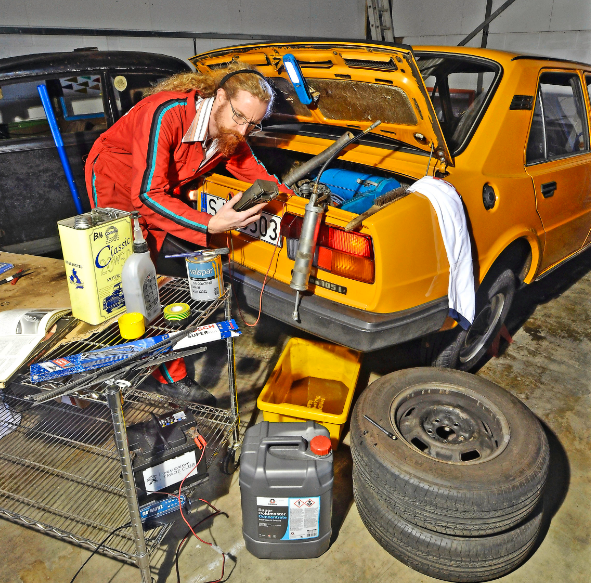 There’s no reason why you shouldn’t run a classic through the winter if it’s first prepared by thorough inspection and rustproofing.
There’s no reason why you shouldn’t run a classic through the winter if it’s first prepared by thorough inspection and rustproofing.
First of all, make sure the tyres are in good condition and have at least 3mm of tread. If you cover a lot of winter miles, a set of winter tyres is a worthwhile and modest investment (from £120).
Under the bonnet, make sure the engine air intake is set to draw warm air from around the exhaust manifold. This prevents carburettor icing on cold or damp mornings. Some cars have an automatic flap valve, some have a lever to adjust and others require you to manually reposition the intake pipe. If a flexible hose is fitted, make sure it’s not split or holed.
Check and top-up gear and axle oil levels. If the coolant solution is weak or over two years old, drain the cooling system and refill it with a mix of one-part ethylene glycol antifreeze and two parts water (preferably soft or deionised). Throw the screenwash away, clean the reservoir with a bottle brush and refill it with a strong solution of fresh fluid. Keep a cotton cloth or chamois pad in the car to clear mist from the screen – avoid wiping it with your hand.
Remove the battery and clean it. Use an old-fashioned charger to give it an overnight charge at no more than four to five Amps. This slight over-charge is beneficial to older batteries if done once or twice a year. If you have a ‘smart’ charger, this is excellent for regular top-ups. Use it weekly over the winter if the car has a dynamo. Clean the terminals and clamps to shiny metal and coat them with petroleum jelly or silicone grease. Use a multimeter to check the charging voltage is at least 13.5V at mid-revs with the headlamps on and not over 14.5V with the lights off. Make sure all the lights work and investigate any that are dull.
Clean or replace the spark plugs and points and use petrol or white spirit to remove dirt from the HT leads, distributor cap and coil. Keep them clean and don’t be tempted to spray with ignition sealers or aerosol oils. Replace any split rubber caps.
Inject the locks with silicone oil or pack them petroleum jelly on the end of the key to prevent them freezing.
Thoroughly clean the underside of the car and treat it with underbody wax. Spray cavity wax generously into hollow members. Coat chromework with petroleum jelly or clear semi-setting wax. The latter can also be applied to the sills, valances and also the exposed seams of the bodywork. Touch up any paint chips, and polish and wax the body. Rub glycerine into the door seals to avoid freezing in wet weather. If the front or rear screens leak, seal over the top of the joint between the rubber seal and the body and glass with clear silicone sealant. Remove and dry out the soundproofing felt from the footwells if it still gets wet.
Hose dirt from the wings and wheelarches periodically. Frequent washing of the whole underbody throughout the winter can do more harm than good. Water – carrying washed-off salt – gets into places which it wouldn’t normally go.
If the car’s never gets up to temperature, replace the thermostat. If it still runs cold, consider blanking off part of the radiator with a piece of cardboard or a radiator muff – but keep a close eye on the temperature gauge in case it gets too hot. Last but not least, add a reflective vest, warning triangle and an LED work-light to your emergency toolkit.

excellent tips
Je cherche une vidéo pour changer passage de roue et aile et parchoc avant droite sut xsara 2 I am looking for a video to change wheel and wing passages and front right sut xsara2.